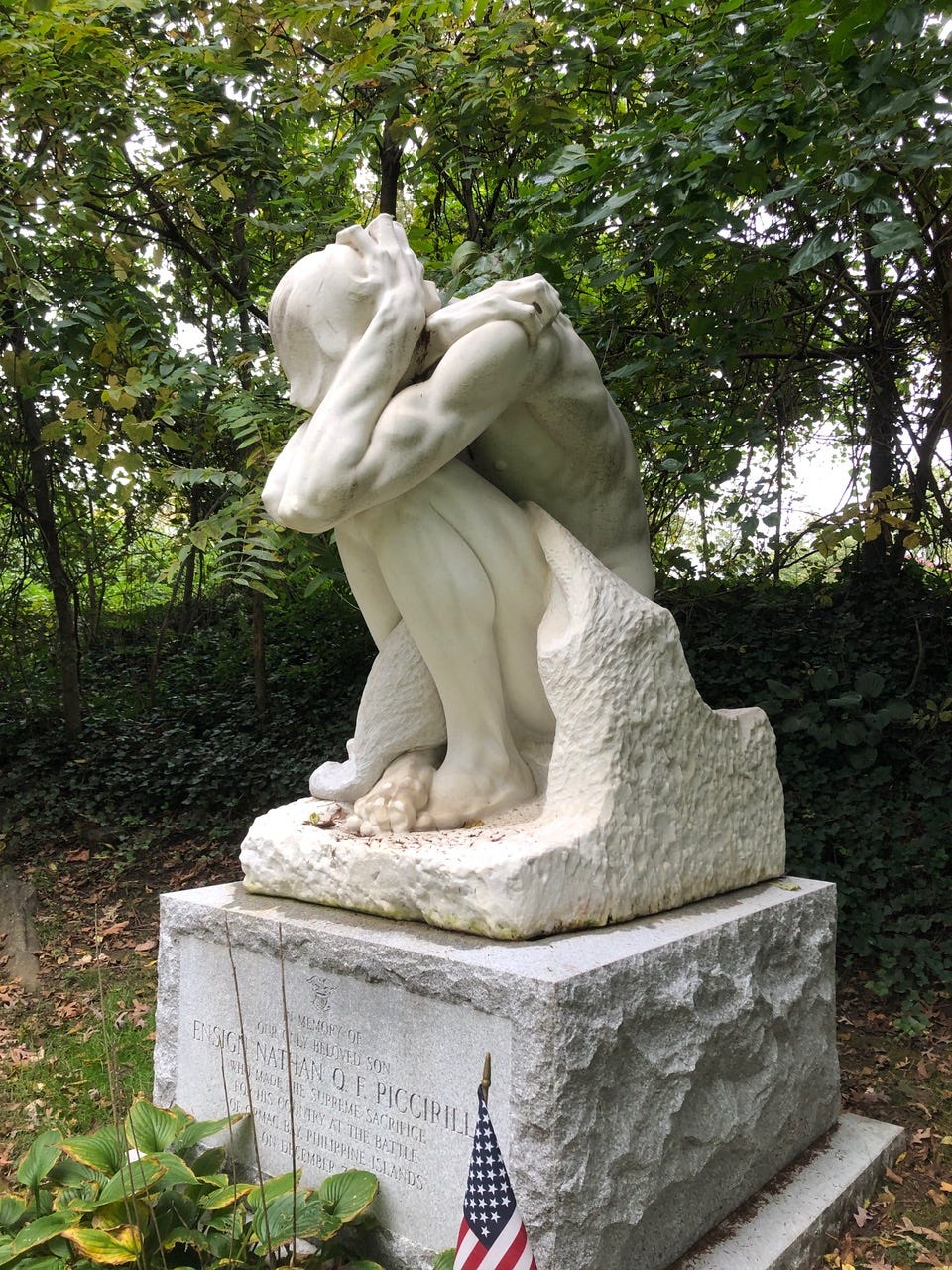In the early 1900s, in what was then the rural farmlands of the Bronx, six Italian brothers were quietly reshaping American art history—not just with their chisels, but with their forks and knives too.
The Piccirilli brothers—Attilio, Furio, Ferrucio, Masaniello, Orazio, and Getulio—had arrived from Massa di Carrara, Italy in 1888, bringing with them generations of marble-carving expertise. By the turn of the century, they'd established America's largest and most influential sculpture studio. But what truly made their workshop revolutionary wasn't just the marble dust that filled the air—it was the chatter about sculpture over the simmering tomato sauce that wafted the aroma of garlic and olive oil.
Knife, Fork and Chisel
When I recently interviewed sculptor John Belardo for Sculpture Vulture, he painted a vivid picture of the Piccirilli studio that made my heart ache with envy. As he described it, the brothers' Bronx workshop wasn't just a place where America's most iconic monuments were carved—it was a genuine sculptor's hub, where artistic community happened organically over plates of pasta.
"At the time, the Bronx was farmland," Belardo explained. "They moved up to 142nd Street. They built the brownstone and they built this beautiful studio. And it quickly became the biggest studio in the country and really the centre for American sculpture."
What made this space so magnetic wasn't just the impressive works taking shape in marble. It was Attilio Piccirilli himself, often found not at his carving bench but at the stove, wooden spoon in hand and, no doubt, chisel in his belt.
"Of course, you know, a great Italian household, there would be these big, huge dinners," Belardo told me. "These dinners where Attilio himself would always be cooking.”
A Table Where American Monuments Were Born
Imagine this scene: Daniel Chester French dropping by to check on the progress of his Lincoln Memorial model. Augustus Saint-Gaudens arriving to discuss a relief. George Grey Barnard stepping in to talk shop. Politicians stopping by to view works commissioned for public squares. And instead of formal meetings in sterile offices, Attilio would usher them all to the dinner table.
As these titans of American sculpture twirled pasta on their forks and passed the bread, they weren't just feeding their bodies. They were engaging in the kind of loose, flowing, wine-lubricated conversation that has fuelled artistic innovation since the Renaissance.
"Sometimes that's what a good meal is about," Belardo reflected. "It's about kind of loosening up your tongue and just going on. And if you're being surrounded by all this great work, you know, you're in the studio, you're looking, you're seeing all these great artists and all this different work. And then you sit down to a meal with them."
This wasn't just dinner. It was artistic cross-pollination happening in real time
The Lost Art of Artistic Spontaneity
What struck me most during my conversation with Belardo wasn't just the romantic notion of artistic gatherings, but how dramatically different this approach is from today's art world.
"One of the things that makes my heart sink about the era that we live in," I lamented during our interview, "is that everything has to be pre-booked and everything has to be organized way ahead of time."
The Piccirilli studio represented something increasingly rare: a place where artists could simply drop in, where ideas flowed as freely as the wine, where the barriers between work and life and community dissolved.
"It feels like there was more like just rolling waves of people dropping in and staying and maybe drinking and talking," I noted, feeling a twinge of envy for this vanished world.
John agreed, "You know, sometimes that's what a good meal is about."
More Than Just Carvers
The tragedy is that despite creating this remarkable hub of artistic ferment—and despite their hands literally shaping America's monumental landscape—the Piccirilli brothers remained largely anonymous for decades. Their names weren't carved alongside French's or Saint-Gaudens' on the great works they helped create.
They translated the Lincoln Memorial into marble so perfectly that when its 28 blocks arrived in Washington, no adjustments were needed. They carved the Maine Memorial at Columbus Circle, with its 11 allegorical figures. Attilio himself designed the Wisconsin State Capitol pediment. Yet for years, they were merely "the carvers," their artistic contributions minimized.
Only recently have institutions like the Metropolitan Museum of Art begun acknowledging works in their collection as "Carved in the Piccirilli studio." This belated recognition hints at a deeper truth: these weren't just technical craftsmen translating others' visions. They were artistic collaborators whose sculptural sensibility profoundly influenced the final works.
The Spirit Lives On
As I reflect on what made the Piccirilli studio so special, I can't help but see parallels to what I am trying to create with Sculpture Vulture. The art world desperately needs more spaces for genuine conversation about sculpture, more opportunities for spontaneous creative communion, more tables where artists can break bread together.
Perhaps what the Piccirillis understood instinctively was that great art isn't created in isolation. It emerges from community, from conversation, from the friction of ideas shared over simple meals. Their greatest creation wasn't just the marble monuments that dot America's landscape—it was the model of artistic community they built, fork by fork, chisel by chisel and meatball by meatball.
This post was inspired by a conversation with sculptor John Belardo for the Sculpture Vulture podcast. John has spent 25 years researching the Piccirilli brothers and their profound influence on American sculpture. The images are copyright, John Belardo.
As often as I can, I (Lucy Branch) turn my podcast episodes into blog posts so you can read and revisit key takeaways from our conversations. I use AI tools to help organise and refine the text, such as Claude AI, but everything you read here is based on my original discussions with my guests.






